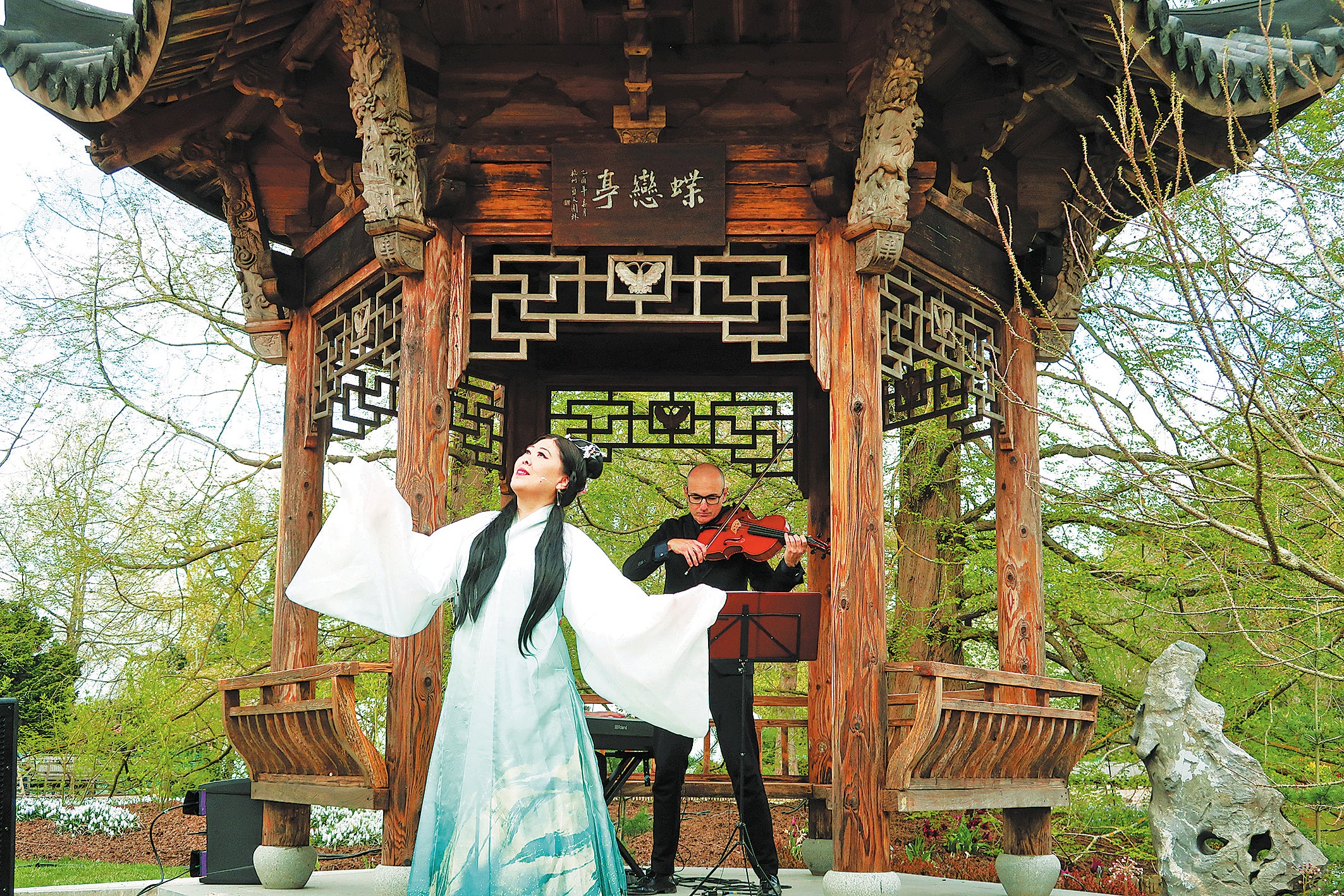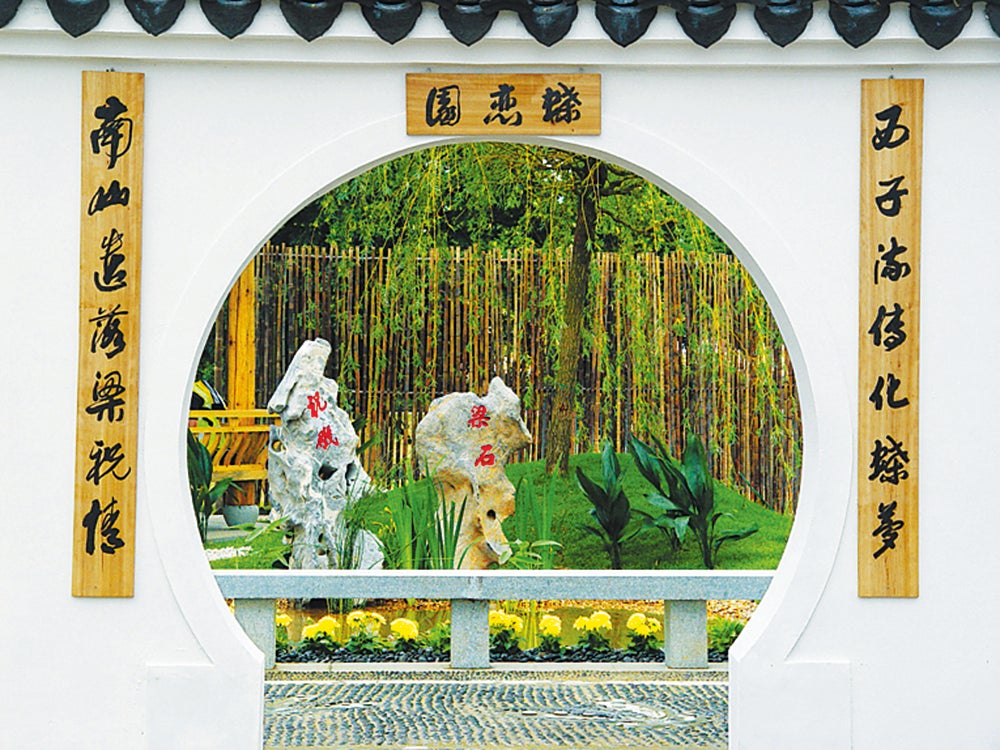Pavilion stands as testament to ties
THE ARTICLES ON THESE PAGES ARE PRODUCED BY CHINA DAILY, WHICH TAKES SOLE RESPONSIBILITY FOR THE CONTENTS

Some 25 miles southwest of central London lies a garden. About five minutes’ walk inside that garden – the Royal Horticultural Society’s Wisley garden, in Surrey – is a small lake. And, on the bank of that lake stands a Chinese-style building called the Butterfly Lovers Pavilion.
The wooden hexagonal pavilion has attracted hundreds of thousands of visitors each year since it was built in 2005.
Recently, a restoration project has ensured the beloved pavilion can continue to be a symbol of cultural exchanges between China and the United Kingdom.
The traditional structure was originally featured in a Chinese show-garden at the RHS Hampton Court Palace Flower Show, one of the world’s biggest gardening contests and festivals, in 2005.

The pavilion’s designer, Liu Tingfeng, a professor of landscape and garden design at Tianjin University, still vividly recalls the day the show-garden was unveiled.
“The British visitors were amazed by the pavilion and Chinese garden, because our philosophies in terms of making a garden are different – we had very few flowers, but visitors could find various views and different mini-landscapes as they stepped inside and looked from different angles,” Liu says, adding that there was a lot of enthusiasm and media coverage at the time.
With a height of 19.7ft and a base width of 16.4ft, the six sides of the pavilion are decorated with butterfly patterns, in homage to the Chinese legend of Liang Shanbo and Zhu Yingtai, or the Butterfly Lovers.
Their story is set during the Eastern Jin Dynasty (317-420), with Zhu, a daughter in a wealthy family, entering an all-male academy disguised as a man, where she falls in love with her classmate, Liang. The lovers are unable to marry because of objections from Zhu’s family, and both die prematurely, turning as they do into beautiful butterflies that fly off together into an eternal paradise.
The story has been told from generation to generation in China, and taken as the inspiration for bountiful artworks that, in turn, have had profound effects on Chinese culture and, in this case, a pavilion.
The building of the pavilion was sponsored by Hangzhou Blue-Sky Landscape Group, from Zhejiang province, where the Butterfly Lovers story was set. All materials used in its construction were shipped to the UK, and put together, piece by piece, to be the focal point of the temporary Chinese garden at the flower show in 2005, which won a silver-gilt award.
When the show was over, Liu and the company decided to leave the pavilion in the UK, as a legacy. Liu chose Wisley as the pavilion’s final home after the Royal Horticultural Society offered several possible locations.
“I chose the location because it is beside a lake. In Chinese philosophy, we always try to create shan shui, or mountains and waters, in the garden,” Liu says.
Matthew Pottage, curator of the garden, says: “It quickly became very popular with our visitors. People asked if they could propose to their partner in the pavilion. People asked if they could have a drink reception there.”
As time passed, parts of the pavilion started to deteriorate and the garden’s managers eventually had to set up a perimeter around it, to ensure there were no accidents.
In a short documentary about the signature flowers of China, produced by the TV programme China Hour in 2021, Pottage talked about the poor condition of the pavilion and asked for assistance from the local Chinese community.
When the news reached the China Chamber of Commerce in the UK, it started to fundraise for the pavilion’s restoration, as part of its charity work within the Lord Mayor’s Appeal, the official charity of the City of London.
Zhang Huijuan, vice-chair of the CCCUK, says the pavilion had become a symbol of China-UK friendship, and with donations from the chamber’s member companies, a six-month restoration project was launched.
Pottage explains the principle of the project: “We want it to look loved and maintained, but don’t want it to look sparkling new. The British winter is very wet and it rains a lot. So, there is always a balance between trying to keep the wood sound and keeping it looking natural.”
The restoration was completed by the end of last year, and the CCCUK and the RHS held a celebration in front of the pavilion in April.
